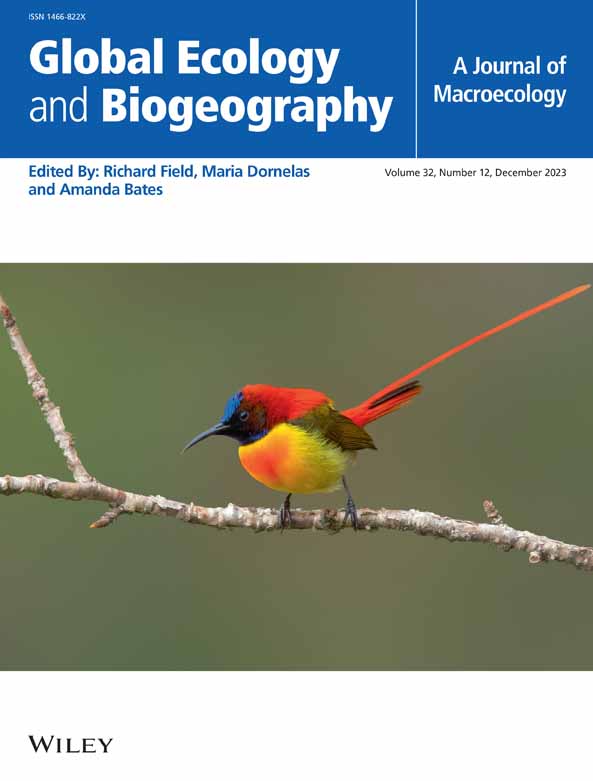Continental Connections: Changing Temperature, Wind and Precipitation Advance the Postbreeding Roosting Phenology of Avian Aerial Insectivores
Abstract
Aim
Migratory birds are under threat by climate change. Successfully conserving them requires knowing which climatic factors drive changes in their migratory behaviour. Weather conditions may directly or indirectly affect the temporally disjointed life history stages of migratory birds, including the breeding, roosting and nonbreeding stages. However, the influences of these broad-scale patterns are often not studied together. Coupling migratory bird movements estimated using weather radar (NEXRAD) with long-term and large-scale environmental data allows us to overcome these spatiotemporal uncertainties. Here, we assess environmental drivers of the phenology of postbreeding roosting of aerial insectivores in the Great Lakes region (USA) by evaluating predictors during the months leading up to roosting across species' ranges.
Location
Northern United States and Canada.
Time Period
21-year (2000–2020).
Major Taxa Studied
Avian aerial insectivores.
Methods
We conducted a spatially explicit time-window analysis to examine the effects of 17 gridded weather and vegetation variables on swallow peak roosting phenology in the Great Lakes, making minimal ecological assumptions.
Results
We found that peak roosting timing is paced by both local conditions (headwind at 850 hPa) at the Great Lakes and distant conditions (minimum temperature, precipitation rate and specific humidity) at the likely breeding and stopover sites, with warmer temperatures advancing, headwind delaying and high precipitation advancing the phenophases. Time windows selected for the possible breeding and stopover sites are mostly before or around the time of roosting, with one exception during wintertime.
Main Conclusions
Although climatic shifts play a significant role in driving variation in phenology, for migratory species, the proximate driver can originate hundreds to thousands of kilometres away, and potentially months prior. Our study illuminates these far-reaching patterns in aerial insectivores, enhancing our grasp of migration ecology and paving the way for a more comprehensive understanding of hemispheric animal movements.


 求助内容:
求助内容: 应助结果提醒方式:
应助结果提醒方式:


